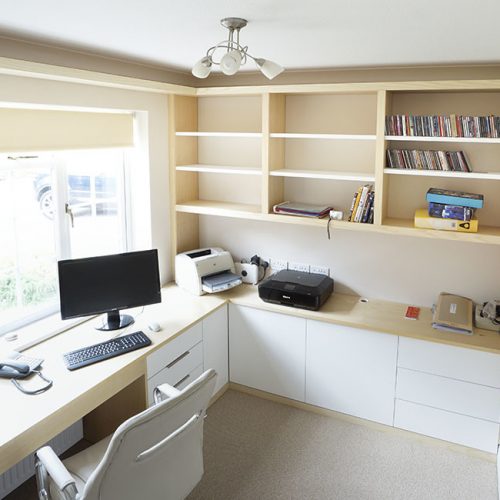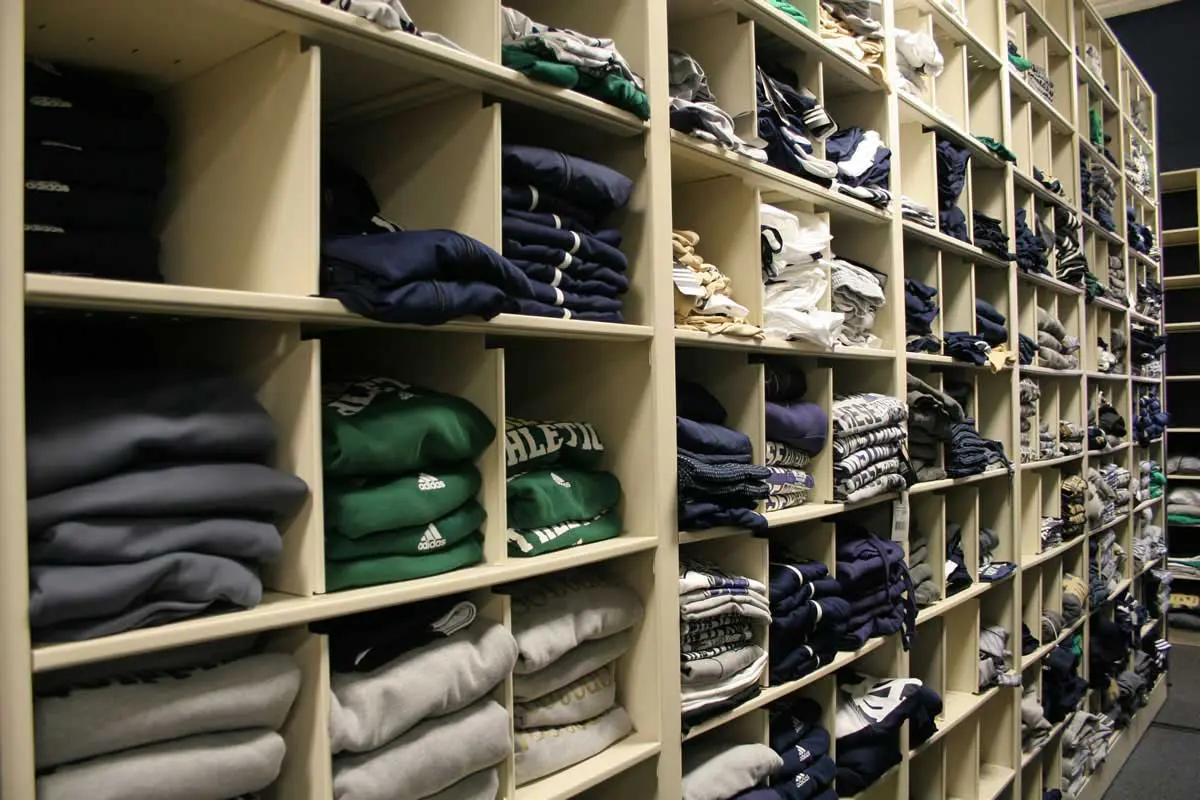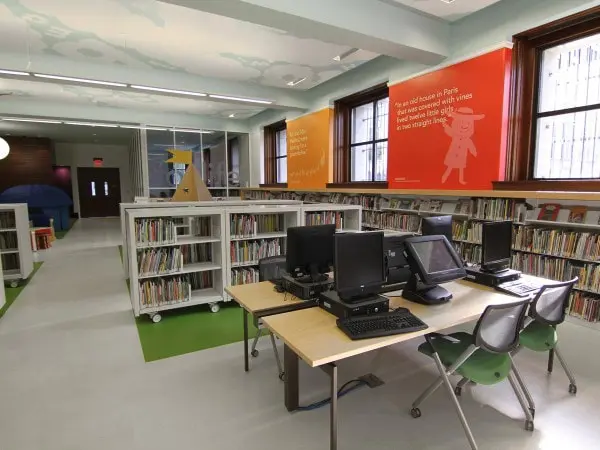
In today’s fast-paced business world, efficiency and organization are paramount. The layout and design of your office space play a significant role in achieving these goals. One effective way to enhance your workspace is by integrating storage solutions into office furniture. This innovative approach not only optimizes your storage space but also elevates the overall functionality and aesthetics of your workspace.
Enhanced Organization
One of the primary advantages of integrating storage solutions into office furniture is improved organization. Traditional office layouts often rely on standalone cabinets and shelving units to store files, supplies, and personal items. However, these items can clutter your workspace and make it challenging to find what you need quickly.
By incorporating storage features directly into your office furniture, you can streamline your storage solutions. Desks with built-in drawers, shelves, or cubbies allow you to keep essential items within arm’s reach. Conference tables with hidden compartments provide discreet storage for meeting essentials like notebooks and markers. This enhanced organization leads to increased productivity, as you spend less time searching for items and more time focusing on your tasks.
Optimized Use of Space
Effective space utilization is crucial in any office setting. Integrating storage solutions into your furniture allows you to make the most of your available space. Customized storage options can be tailored to fit your specific needs and the layout of your office.
For instance, modular office furniture systems can be configured to maximize space in smaller offices or cubicles. Wall-mounted storage units take advantage of vertical space, freeing up valuable floor area. Additionally, multi-functional furniture pieces, such as storage ottomans or filing cabinets that double as seating, enable you to optimize your space without sacrificing comfort or functionality.
Aesthetic Appeal
Office aesthetics play a significant role in creating a conducive work environment. Traditional storage solutions like filing cabinets and wire shelving can detract from the overall look of your office. In contrast, integrating storage into your furniture allows you to maintain a clean and cohesive design.
Many furniture manufacturers offer a wide range of styles and finishes to match your office decor. Whether you prefer a modern, minimalist look or a more traditional aesthetic, you can find furniture with integrated storage that complements your space. This not only enhances the visual appeal of your office but also leaves a positive impression on clients and visitors.
Improved Ergonomics
Ergonomics is a critical consideration for office furniture. It’s essential to have a workspace that supports proper posture and minimizes discomfort. Integrating storage solutions into your office furniture can contribute to improved ergonomics.
For example, adjustable standing desks with built-in storage allow employees to switch between sitting and standing positions, promoting better posture and reducing the risk of musculoskeletal issues. Ergonomic office chairs with integrated lumbar support and adjustable armrests enhance comfort during long hours of work.
Personalization and Customization
Every office is unique, and the storage needs of one organization may differ from another. Integrating storage solutions into office furniture provides the opportunity for personalization and customization. You can work with furniture manufacturers to create pieces that cater to your specific requirements.
Customizable options include the number and size of drawers, the configuration of shelves, and the choice of materials and finishes. This level of personalization ensures that your office furniture not only meets your functional needs but also aligns with your brand identity and corporate culture.
Cost Savings
While integrating storage solutions into office furniture may initially seem like an investment, it can lead to long-term cost savings. Well-organized office spaces can reduce the need for excess storage units and off-site storage facilities, ultimately lowering operational costs.
Additionally, investing in high-quality, durable furniture with integrated storage means that you won’t have to replace items as frequently. This can result in significant savings over time, making it a financially sound decision for your business.
Reduced Environmental Impact
Sustainable office practices are becoming increasingly important in today’s world. Integrating storage solutions into office furniture can contribute to your organization’s efforts to reduce its environmental footprint. By choosing eco-friendly materials and designs, you can make a positive impact on the environment.
Look for furniture manufacturers that prioritize sustainability, using recycled materials and sustainable sourcing practices. Additionally, furniture with long lifespans reduces the need for disposal and replacement, further reducing waste.
FAQ:
1. Can I add storage solutions to my existing office furniture?
Yes, you can. While it may require some modifications, such as adding drawers or shelves, many furniture manufacturers offer accessories and add-ons to enhance the storage capacity of existing furniture pieces.
2. Are there any specific ergonomic considerations when integrating storage into office furniture?
Yes, it’s essential to ensure that the added storage elements do not interfere with the ergonomic design of the furniture. Consult with an ergonomic expert or furniture manufacturer to ensure that the integration is done correctly.
3. What types of storage solutions are commonly integrated into office furniture?
Common integrated storage solutions include drawers, shelves, cubbies, filing cabinets, and concealed compartments. The choice depends on your specific storage needs and the type of furniture.
4. Can integrated storage solutions be customized to match our office decor?
Yes, many furniture manufacturers offer customization options, allowing you to choose materials, finishes, and styles that align with your office decor and branding.
5. Are there any additional benefits to integrating storage into office furniture?
Yes, in addition to the benefits mentioned in the blog post, integrated storage solutions can also help in reducing clutter and creating a more organized and professional office environment.
6. What should I consider when selecting furniture with integrated storage for my office?
When selecting such furniture, consider factors like the size of your space, your storage needs, the aesthetics you prefer, and your budget. It’s also a good idea to test the furniture for comfort and ergonomics.
7. Is it possible to integrate technology into office furniture for added functionality?
Yes, many modern office furniture pieces come with built-in technology options, such as charging ports, cable management, and even IoT connectivity, to enhance functionality and convenience.
8. Are there any tax benefits associated with investing in office furniture with integrated storage?
Depending on your location and tax laws, you may be eligible for tax deductions or credits for purchasing office furniture that improves organization and productivity. Consult with a tax professional for specific advice.
9. How can I find a reputable furniture manufacturer that specializes in integrated storage solutions?
You can start by researching furniture manufacturers online, reading reviews, and requesting quotes from several companies. It’s also a good idea to visit showrooms or attend furniture trade shows to see their products in person.
10. Can integrated storage solutions be added to home office furniture as well?
Absolutely! Integrating storage solutions into home office furniture is a great way to create an organized and productive workspace in your home.
Incorporating storage solutions into office furniture is a smart investment that can yield numerous benefits, from enhanced organization and aesthetics to



